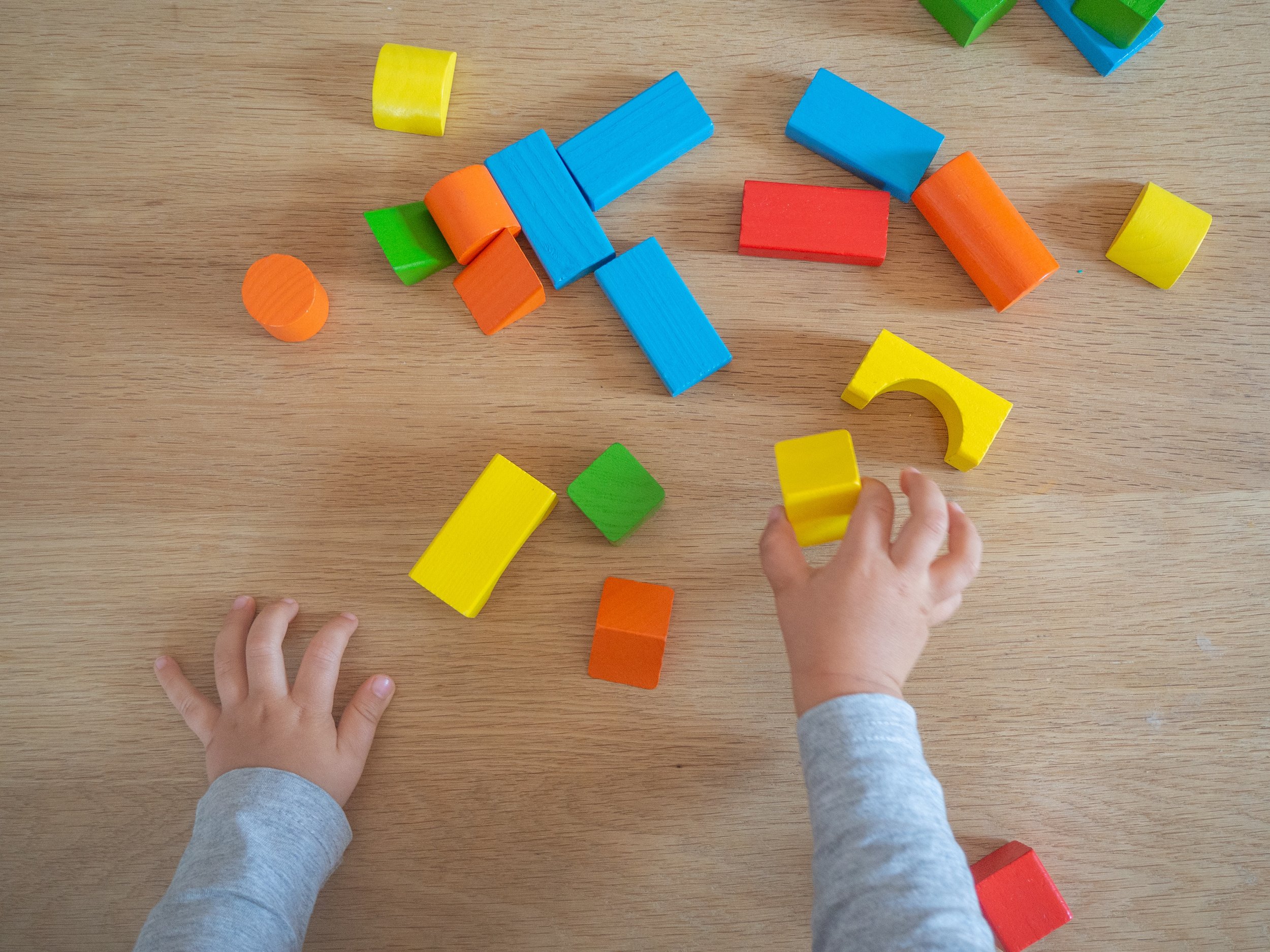Could Your Child Be a GLP? (An Intro to Gestalt Language and Autistic Communication)
Have you been wondering if your child is a gestalt language processor (GLP)? It’s been a major buzzword in the speech world for the past few years - and for good reason! It has totally altered the landscape of speech-language pathology for so many therapists and families, myself included. Learning about gestalt language and Natural Language Acquisition (NLA) has fundamentally changed my understanding Autistic communication and evolved the way I support their language development. I’m making it my mission to teach families about gestalt language and empower them to support their GLPs.
Why should you care about GLP? Ultimately, GLP is not a diagnosis, but is a label for how some people acquire language. Gestalt language processing is a completely normal way of learning language, and many GLPs move through the stages and arrive at flexible speech independently. Having a label comes in handy if you start to notice that your child/communicator seems to be getting “stuck” in their scripts and can’t communicate what they want, when they want to. Understanding the way they process language helps to identify which tools and strategies will be most helpful for them.
So, what exactly is Natural Language Acquisition? It's a framework that suggests some individuals (GLPs) learn language in chunks, or "gestalts," rather than word-by-word like many of us did as babies (analytic language learning). People do not have to be solely a gestalt or analytic language learner; it is theorized that many are dual processors, using a mix of both. GLP is a common Autistic communication style, but non-Autistic communicators can also be GLPs.
Note: NLA generally refers to the framework and GLP (Gestalt Language Processing/Processors) can refer to either the framework or the individuals who follow the framework. These terms are frequently used interchangeably in the SLP/Autistic communities.
An example, ¿por favor? You’ve probably learned language through some gestalts. Think about a common first phrase taught to English-speakers learning Spanish: “¿Dónde está el baño?” You may have learned that the whole phrase means, “Where is the bathroom?” but it wasn’t until later on that you explicitly learned that “dónde está” means “where is” and “el baño” means “the bathroom. It was probably even later that you were able to break down every single word: dónde=where, está=is, el=the, baño=bathroom. Finally, you may have eventually learned that you can change the grammar and morphemes (verb tense and articles) “dónde estás las galletas” (where are the cookies). And then suddenly you knew how to obtain sweets in any Spanish-speaking location. ¡Excelente!
There are 6 stages of gestalt language development:
Stage 1: Scripts/delayed echolalia
Stage 2: Breaking apart chunks, mixing/matching
Stage 3: Single words and two-word combinations
Stages 4-6: Emerging, complex, and sophisticated grammar
Remember that GLP is a framework, and not all individuals will follow these stages exactly. As your child progresses through these stages, you'll notice them shift from relying on scripted phrases to using individual words more flexibly and creating brand new, original ideas.
This whole process is longer than it is for analytic language learners, who only need to progress through 4 stages. Gestalt language learners have two extra stages of language development to go through. Some may progress through them quickly, while others may get stuck in those early stages. Enter the speech-language pathologist!
You may be thinking, “okay, this sort of sounds like my kid, but how do I get them diagnosed as a GLP” An NLA-trained SLP will be able to help you confirm their language acquisition style for sure, but you don’t need a formal diagnosis to identify as a GLP. As a parent, you know your child best, and you can examine how they are currently communicating.
Your child might be a GLP if they:
➜ Repeat the same words or phrases the same way every time
➜ Repeat quotes from movies, books, songs, or things they’ve heard others say
➜ Replay the same clips (or specific moments from a clip) repeatedly
➜ Speak with a distinct melody or intonation, even if their words are unclear
➜ Hum/sing, but they aren’t speaking yet
➜ Dislike it when others sing
➜ Mix up pronouns (such as saying, “Are you okay?” when they get hurt)
➜ Are “stuck” using only single words
➜ Have difficulty answering questions; may repeat your question instead of answering it.
➜ Seem out of context when they speak
➜ Use repetitive sounds or movements
If you or your child are frustrated when trying to communicate or they can’t accurately make their needs known, that is a great indicator that it’s time to collaborate with a speech-language pathologist. At Cold Spring Speech Therapy we offer 15-minute free consultations. Reach out today and we can help you make a plan to support your gestalt language processor!
Cold Spring Speech Therapy is a neurodiversity-affirming speech and language practice based in the Hudson Valley. We travel to homes in nearby Putnam, Dutchess, and Upper Westchester. Virtual services are available to all New York State residents.
References and Resources:
The American Speech-Language Hearing Association
www.asha.orgBlanc, M. (2012). Natural language acquisition on the autism spectrum: The journey from echolalia to self-generated language. Madison, WI: Communication Development Center
Blanc, M. (2013, March/April). Echolalia on the spectrum: The natural path to self-generated language. Autism/Asperger’s Digest. Retrieved from http://autismdigest.com/echolalia-onthe-spectrum/
Prizant, B. (1983). Language Acquisition and communicative behavior in autism: Toward an understanding of the “Whole” of it. Journal of Speech and Hearing Disorders, 48, 296-307.
Stiegler, L. N. (2015). Examining the echolalia literature: Where do speech-language pathologists stand? American Journal of Speech-Language Pathology, 24, 750-762
Meaningful Speech Course, Alexandria Zachos.
AAC & Gestalt Language Processing Facebook Group
Natural Language Acquisition Study Group Facebook Group


